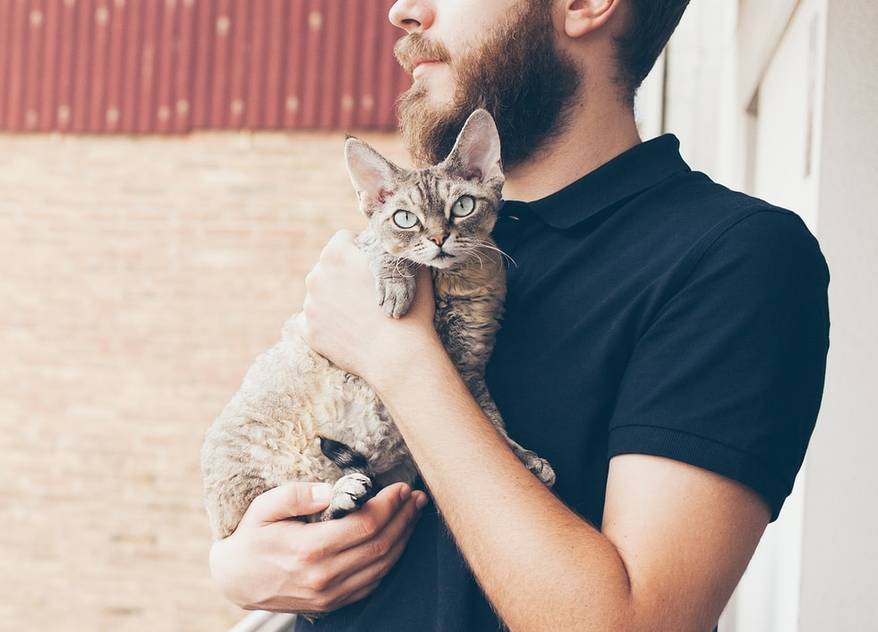
-
Find the right food for your petTake this quiz to see which food may be the best for your furry friend.Find the right food for your petTake this quiz to see which food may be the best for your furry friend.Featured products
 Puppy Large Breed Chicken & Brown Rice Recipe
Puppy Large Breed Chicken & Brown Rice RecipeVital nutrients to support 5 essential building blocks for lifelong health
Shop Now Puppy Sensitive Stomach & Skin Salmon & Brown Rice Recipe
Puppy Sensitive Stomach & Skin Salmon & Brown Rice RecipeDelicious, highly digestible recipe, gentle on stomachs. Nourishes skin & promotes a lustrous coat
Shop Now Adult Chicken & Barley Recipe Dog Food
Adult Chicken & Barley Recipe Dog FoodSupports lean muscle and beautiful coat for adult dogs
Shop NowFeatured products Adult Urinary Hairball Control Chicken & Rice Recipe Cat Food
Adult Urinary Hairball Control Chicken & Rice Recipe Cat FoodActively supports the health of the whole urinary system
Shop Now Adult 7+ Chicken Recipe Cat Food
Adult 7+ Chicken Recipe Cat FoodSupports energy level and beautiful fur in mature cats
Shop Now Kitten Chicken Recipe
Kitten Chicken RecipeVital nutrients to support 5 essential building blocks for lifelong health
Shop Now -
Dog
- Dog Tips & Articles
-
Health Category
- Weight
- Food & Environmental Sensitivities
- Urinary
- Digestive
- Joint
- Kidney
-
Life Stage
- Puppy Nutrition
- Adult Nutrition
- Senior Nutrition
Cat- Cat Tips & Articles
-
Health Category
- Weight
- Skin & Food Sensitivities
- Urinary
- Digestive
- Kidney
-
Life Stage
- Kitten Nutrition
- Adult Nutrition
Featured articles The Incredible Science Behind Your Pet's Microbiome
The Incredible Science Behind Your Pet's MicrobiomeLearn what a pet's microbiome is, how it contributes to your pet's gut & overall health, and why nutrition is important in maintaining healthy microbiomes.
Read More Pet Food Storage Tips
Pet Food Storage TipsDiscover how and where to store your dry, as well as canned, dog and cat food. Learn how to find the "best before" dates on all Hill's pet food packaging.
Read More Water
WaterDiscover why water is the most important nutrient for your dog or cat to live a healthy life. Find out how much water your pet should consume each day.
Read More -


When you share your life with a cat, you know the comfort of having a cuddly friend around to scoop up and snuggle. But what if your kitty doesn't want any part of leaving the ground for a hug?
Read on for a few tricks to learn how to pick up a cat in a way that makes both of you happy.
Why Is Picking Up a Cat So Hard?
Your cat may appear aloof or uninterested, and sometimes you might think she's just not that into you. When you try to cuddle her, her attention may be diverted by a toy mouse, her food dish or her favorite spot at the window.
There's no need to worry — she still loves you. Some cats simply don't like to be held. If a cat wasn't properly socialized with humans early on, explains Petful, she'll tend to be more fearful. Cats retain many of their wild instincts, and if they previously weren't around humans often (or were around a not-so-nice human), they'll be a little skittish, even in their loving forever home.
Oftentimes, a cat's unwillingness to be held (or not held) is a breed characteristic. One of the most affectionate cats you'll find is the hairless Sphynx. She is playful and loves her people, according to PetHelpful. The Ragdoll, a beautiful cat with soft fur, is another breed that will demand you pick her up and carry her around.
Although she has luxurious fur that makes you want to pet her all day, as well as a sweet personality, the Bengal cat is difficult to pick up and cuddle. Retaining much of her "wildness," she is active and athletic and has places to be that don't include your arms.

It's All in the Timing
The best time for picking up a cat is when she wants you to pick her up, and the best way to determine this is to read your furry friend's body language.
"Cuddly signs, such as rubbing, licking and a joyful tail mean they are happy," explains Trupanion. This would be a great time to take your cat into your arms for a hug. If her tail is bushy or she gives you a hostile meow, don't pick her up in the first place. If she squirms or nips once she's in your arms, put her down immediately. When cats are held, they may feel like they aren't in control of the situation and will want to get away as soon as possible.
There will be times when you have no choice but to pick up your cat. If she's sniffing dangerous food or in a place where she shouldn't be (the bathtub, the kitchen sink — all those places cats likes to hang out), then you have no choice but to scoop her up. Even though this isn't the affectionate hug you've been dreaming of, enjoy the moment. Then quickly bend down and lower her to the floor in a safe place.
There are times when you shouldn't try to pick up your cat, particularly in stressful situations, such as with a new person in the home, a scuffle with another family pet, or a trip to the vet's office. Picking up a cat when she's frightened — no matter how much you want to console her — is not recommended because she's likely to lash out at you.



Tasty Tips
How to Pick Up a Cat Safely
Cats are startled by sudden movements, so slow and steady is best. Start by extending your hand so she can sniff you or rub her head against your fingers, indicating that she's in a good mood. When you do pick her up, use both hands. Whether large or small, all cats should be held with two hands, writes Cat Behavior Associates.
To pick up your cat safely, behavior expert Marilyn Krieger tells Petcha, "Place one hand under her front legs and position your other hand so that it supports her back legs and hind quarters. You can position her so that her hind quarters are supported by the crook of your arm." She should end up securely cradled or sitting on one arm like a rabbit while your other arm makes a kitty seat-belt. A cat's legs should never dangle, as this can make her feel unsupported and unsafe.
When you put your pet back on four legs, always lower her to the floor. A jump from your arms probably won't hurt her, but it won't make her feel supported, either. Unless you need to be holding her for safety reasons, never grip her too tightly or ignore her when she squirms to be let go.
Holding your cat shouldn't be a stressful situation for either of you. Even if she refuses to lie quietly in your arms, she may express her affection in other ways, such as snuggling up to you on the couch or nestling on your feet in bed. Look for those small moments when she shows you just how much she loves you.


Christine O'Brien is a writer, mom, and long-time cat parent whose two Russian Blues rule the house. Her work also appears in Care.com, What to Expect, and Fit Pregnancy, where she writes about pets, pregnancy, and family life. Find and follow her on Instagram and Twitter @brovelliobrien.
Related products

Vital nutrients to support 5 essential building blocks for lifelong health

Actively supports the health of the whole urinary system

Supports energy level and beautiful fur in mature cats

Supports lean muscle and beautiful fur for adult cats
Related articles

What is the best food for an overweight cat? Learn all about weight control food for cats, including what's in it and how it works.

Brushing your cat's teeth is just as important as brushing your own. Learn signs or oral health problems in your cat and how to avoid them.

Learn the different factors that might be contributing to your cat's weight gain, and how bigger doesn't always mean better.

Discover how to identify cat sensitive skin and what you can do to help your cat thrive from head to paw.

Put your cat on a diet without them knowing
Our low calorie formula helps you control your cat's weight. It's packed with high-quality protein for building lean muscles, and made with purposeful ingredients for a flavorful, nutritious meal. Clinically proven antioxidants, Vitamin C+E, help promote a healthy immune system.
Put your cat on a diet without them knowing
Our low calorie formula helps you control your cat's weight. It's packed with high-quality protein for building lean muscles, and made with purposeful ingredients for a flavorful, nutritious meal. Clinically proven antioxidants, Vitamin C+E, help promote a healthy immune system.

